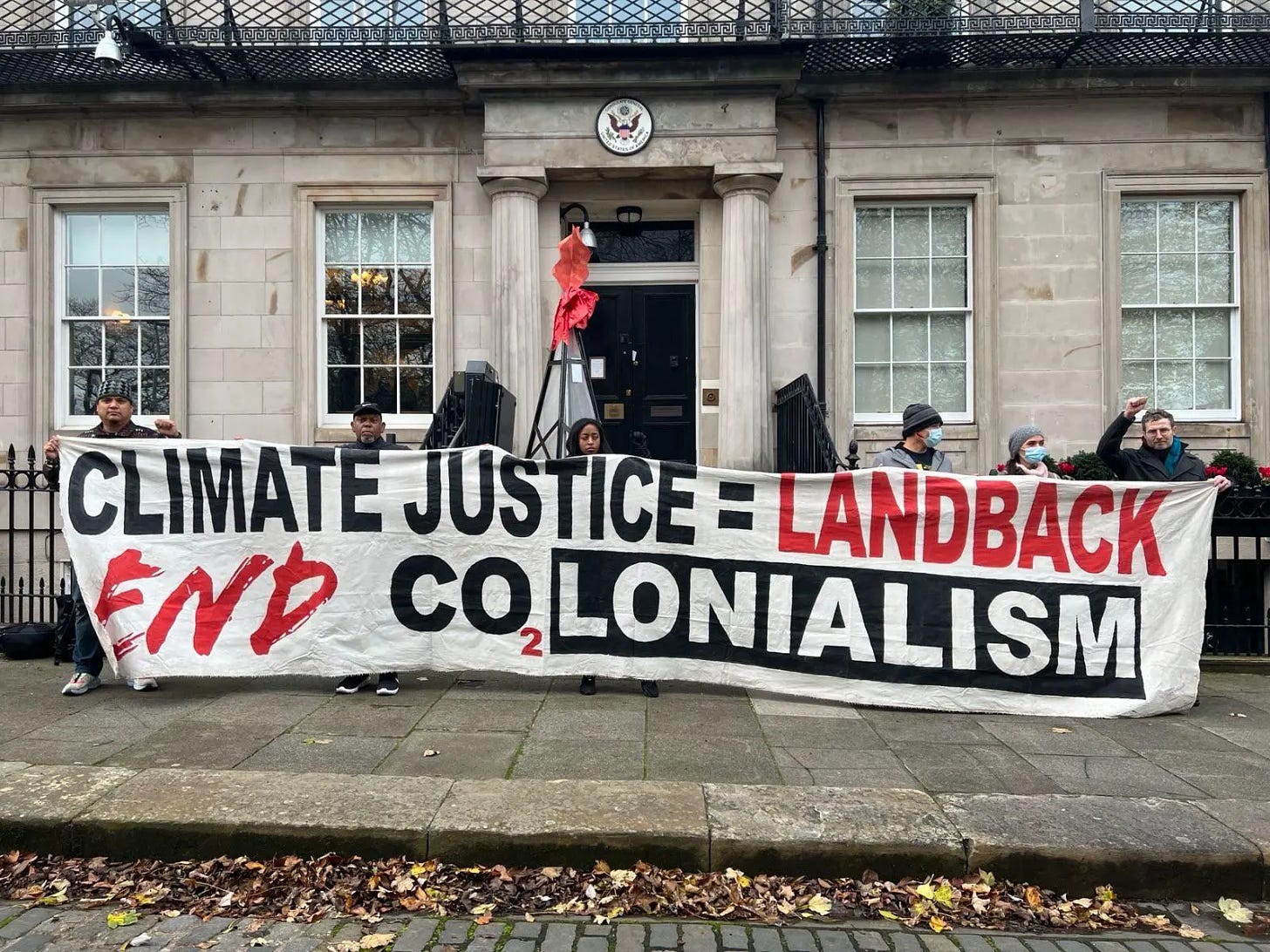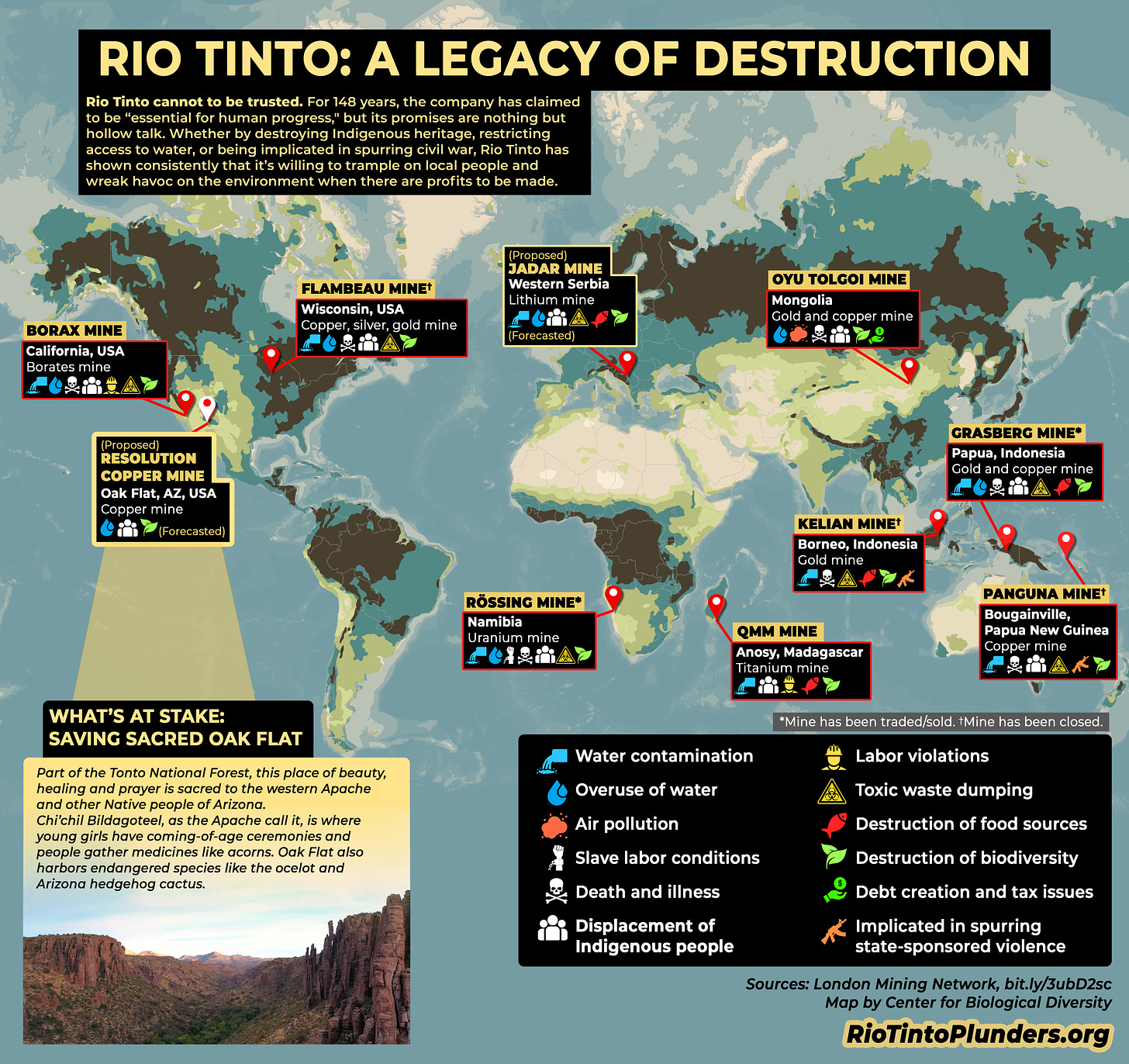Despite Trump's Election, The Fight for Climate Justice is Not Over
The fight is not over, because our movement is not dead.
In 2019, the climate movement politicized me. I grew up in Miami, Florida and despite hunkering in gymnasiums every hurricane season, my public school education left me with a dramatic gap in understanding why. I had heard of the concept of ‘climate change,’ but could not tell you what it meant. Something about coal and warmer weather, but it was always hot in Miami and what did fossils have to do with hurricanes? That quickly changed during my first semester of college, when I took a class about climate change. I learned about how burning fossil fuels releases greenhouse gasses, which act like a blanket around the Earth, trapping the sun’s radiation and increasing surface temperatures. I learned about the fossil fuel industry’s lobbying wing, funding politicians in return for deregulation and subsidies. I learned about “green energy,” carbon footprints, and got really into solar panels, Teslas and Impossible Burgers. I believed that we could flip a switch from dirty energy to “green energy,” coal to solar, beef to soy, and our atmospheric problems would be solved.

The “green energy” transition narrative was captivating. There seemed to be an uncomplicated solution to an existential issue. All we needed were politicians who could incentivize its adoption. I paid more attention to candidates who supported climate action and to legislation that could make our “green energy” future inevitable. If Joe Biden’s climate policies passed in this period of my life, I would have been ecstatic.
Dubbed the “biggest ever climate bill,” The Inflation Reduction Act (IRA) passed under the Biden administration, with Vice President Harris casting a crucial tie-breaking vote in the Senate. The IRA allocated around $780 billion in climate related tax-incentives to consumers and businesses, including $128 billion for renewable energy, $30 billion for nuclear power and $12 billion for electric vehicle incentives. The IRA and its complimentary corporate-subsidy bill, the Bipartisan Infrastructure Law, would supposedly chart America on a course towards its “green energy” future. And a Kamala Harris Presidency would have likely meant its expansion. Instead, we will soon have a different president, one who campaigned on the repeal of the IRA and cancellation of its remaining funding.
Article headlines from Grist, New York Times, Associated Press, PBS, Washington Post, and NPR imply that a Trump Presidency means the end of climate action. Even Bernie Sanders, who publicly disagreed with Harris on other issues, warned before the election that: “If Trump wins, to be honest with you, the struggle against climate change is over.” There are very real reasons to be concerned and Trump’s election victory does promise severe consequences for the environment. I understand the impulse to panic at the prospect of Trump’s climate policies.
But we must not give into this despair. Assessing the unsavory reality of the “green energy” narrative proposed and implemented by Democrats reveals a different, and necessary, perspective.
You might think: “Harris lost, why does this analysis matter?”
1. Despite Trump’s rhetoric, “green energy” will remain a part of America’s energy economy.
2. Rejecting the “green energy transition” framing and honing in on the roots of the climate crisis offer clarity in how to respond to this moment. While the battlefield will shift on inauguration day, our long term fight is the same. Our climate response must transcend elections and policy propositions, a lesson I learned through the land-defense movement.
In 2022, the land-defense movement radicalized me. Land-defense is an international, Indigenous-led movement “protecting biodiversity-rich ecosystems that have been the homes of their people since time immemorial.”1 My introduction to land-defense was through a campaign working with frontline organizers from the Stop Line 3 movement in Northern Minnesota, who had since shifted their attention to a new threat: “green nickel mining.” At the time, I was still enthralled by the idea of a “green energy transition” and was surprised to learn about opposition to an industry subsidized by the newly minted climate bill. Wasn’t this mining good for the environment, because the nickel it produced would be used in electric vehicle batteries?
I knew that we needed vast sums of lithium, nickel, copper, and cobalt to produce solar panels, electric vehicle batteries and other “green energy” technology. But I didn’t know much about the processes of extracting these minerals. Sulfide mining, the method of excavating nickel, copper and other metals, is deemed by the EPA as the most toxic industry in the country. This mining is not only ecologically destructive, but also reinforces environmental racism. The overwhelming majority of “green mines” planned in the United States are located on or near Indigenous lands, impacting communities already on the frontlines of fossil fuel extraction. The mining companies vying to profit from the “green mining” boom are no strangers to environmental and human rights violations. One infamous company, Rio Tinto, has plans to open multiple “green mines” in the United States. Their operations span the globe, destabilizing governments, sparking civil war, destroying sacred sites and plundering Indigenous lands for profit.
The campaign I was working on was researching and raising awareness of Rio Tinto’s next target: Talon Mine in Northern Minnesota. Instead of holding this dangerous corporation at arm’s length, the Biden administration welcomed them with open arms and a $136 million “climate” subsidy.
What exactly did the “green energy transition” entail? Turning this question over in my head and discussing it with others was radicalizing2. Doubt of the “green” lie I had been told started to creep into my head: how could such a harmful industry be subsidized by “the greatest” climate policy and considered “green?”
The technologies touted as our saving grace hold their own set of unsavory realities: they pit clean water against carbon emissions, Indigenous lands against Tesla batteries. The land-defense movement exposed this underbelly of “green energy,” leading me to the roots of climate change: global economic systems of resource control.
Of course, Trump’s energy policies, summed up by his campaign slogan :“drill baby drill,” are rooted in these same systems. More specifically, his plans include ramping up fossil fuel production, rolling back environmental regulations, undermining legitimate climate science, and derailing international climate agreements. According to the New York Times, Trump’s “likely policies would add four billion tons of greenhouse gas emissions to the atmosphere.” The combination of domestic policies; deregulation and fossil fuel subsidies, and international policies; leaving the Paris Climate accords and lessening global pressure to transition away from fossil fuels, will have catastrophic impacts on the trajectory of curbing carbon emissions. Making matters worse, the pretext for taking climate action in the first place is under attack, with Trump likely to cut research funding and appoint climate deniers into prominent positions. These policies are detrimental to the outlook of the climate crisis and change calculations of how to respond.
Another cornerstone of Trump’s energy policy is canceling funding from the aforementioned Inflation Reduction Act (IRA). Although, this is complicated by Elon Musk’s presence in Trump’s campaign, potentially a sign of support for the electric vehicle manufacturer Tesla. And Harris’ reiterated support for fracking further complicates the binary of Democrats = “green mining,” Republicans = fossil fuels.
The harsh reality is that both Republicans’ and Democrats’ energy plans are rooted in ceaseless extraction of the environment. They both want to “drill baby drill;” just for different resources and with different rhetorical strategies.
I don’t want to invalidate the legitimate fear that people have about the climate crisis or stifle anybody’s hope in near-term climate policy. There were positive aspects of Biden/Harris’ policy, unfortunately overshadowed by the false solutions of the “green energy transition.” The point I hope to get across is that our course of action has to rise to the scale of the climate crisis, and address its roots. Neither party has a plan that will get us there.
So what will?
A real climate solution starts with building a shared understanding of the root causes of climate change. Carbon emissions are the beginning of the climate story, not the end. Let’s say that completely eliminating fossil fuels and producing/consuming energy at the same rate while relying on “green energy” technologies was a possibility. The amount of water pollution and land destruction required to procure the minerals would come with their own host of ecological crises, not to mention the mass sacrifice of Indigenous and rural communities both domestically and especially in the global South. Maybe for some, this is a sacrifice worth attempting, but for those of us committed to climate justice, I question the “green energy transition’s” validity.
Fossil fuels and carbon emissions are not the root of the climate crisis: colonialism and capitalism are-systems of land theft and endless, unequal economic growth. Without addressing these roots, any attempt at climate action will inevitably fall short. This requires a focus on radical change (radical meaning: at the roots).
Truthfully, I think most people don’t realize that the “green energy transition” is rooted in sacrifice. I understand wanting to hold on to this narrative for dear life because it presents such a simple solution to an issue with incalculable stakes. I was there once upon a time. But if we are serious about climate justice, if we consider ourselves people of conscience, we must look at the truth. We must reckon with the decisions put in front of us and boldly say: neither of these work for me, there is no lesser of two evils between fossil fuel and “green mineral” extraction. There is only sacrifice, or solidarity. And to choose solidarity is a radical decision.
Where do we collectively harness our solidarity? I’m not going to lie to you, I do not have some grand scheme to enlist you in. I can point towards tangible local/state policies within our current system that make a positive impact and larger political movements that resonate with the long-term horizons we need to achieve. Both are important. But the solution we need is not a single policy, not even a single movement, it is a political awakening at a scale capable of toppling the structures that created the climate crisis.
In Minnesota, where I reside, there are policies to be excited about. One of these is a 100% E-Waste recycling bill, a policy that would provide free electronics recycling for the 266 million pounds of electronic waste Minnesota produces each year. Instead of opening new mines around the world, we can prioritize investments in public transit and walk/bikeable cities, while procuring minerals from the massive supply of E-waste to fill immediate electric vehicle battery needs. Another local policy initiative is Rise & Repair, a statewide coalition advocating for Indigenous rights and climate justice in the state legislature. The coalition is supporting several bills with radical implications, from funding climate justice education in public schools, to land back initiatives for tribes.
I am compelled by the Land Back movement as a solution to the climate crisis. Land Back is the return of sovereignty of Indigenous lands to Indigenous Peoples, and is having tangible victories. Indigenous Peoples around the world have always related to their land through reciprocity rather than commodification. One example is the use of “cultural and traditional fire, a well-recorded example of [traditional ecological knowledge], a practice that was for many decades explicitly outlawed or suppressed informally through land theft and assimilation policies like boarding schools.” These reciprocal relationships to land are a basis for the radical transformation we need. The climate benefits of Indigenous Sovereignty are not theoretical, they are practical: Indigenous Peoples protect 80 percent of the earth’s biodiversity, despite making up 5 percent of the world’s population.
Settler colonialism and the capitalist global economy alienates many of us from land practices that have sustained Indigenous Peoples throughout the world for centuries. The Land Back movement offer a method of building a different world together, with Indigenous Sovereignty at the forefront of climate solutions.

For me, the idea of doikayt, Yiddish for hereness, is a framework for non-Native people’s role in addressing climate change. Doikayt means finding belonging in the places we reside by living in right relationship with the land and Indigenous Peoples. This requires both solidarity with the array of political movements around us, and learning to practice non-capitalist, anti-extractionist ways of living.
Ultimately, addressing the climate crisis will come from mass movements of people transforming our economies and our ways of living. And this was not on the ballot this November, nor any election in U.S. history. The Harris/Biden climate policy proposed shifting the material basis of an extractive energy economy from fossil fuels to “green minerals.” I know this might be disheartening to hear. And I am not saying that Trump’s and Harris’ climate policies were the same. Trump’s policies will cause harm on day 1, and we must resist them with full force. However, if we maintain the focus that to address climate change we must start and end at its roots, then this election does not mean the fight for climate is over, because our movement is not dead.
You can subscribe for free to be notified when I share new writing.
If you’re able to financially support my work, paid subscriptions allow me to spend more hours writing! Free subscriptions and sharing with friends is also helpful and I am appreciative of each and every one of you.
The noun, radical, comes from the Latin radix, meaning "root.”








Amen. Thank you. !!!